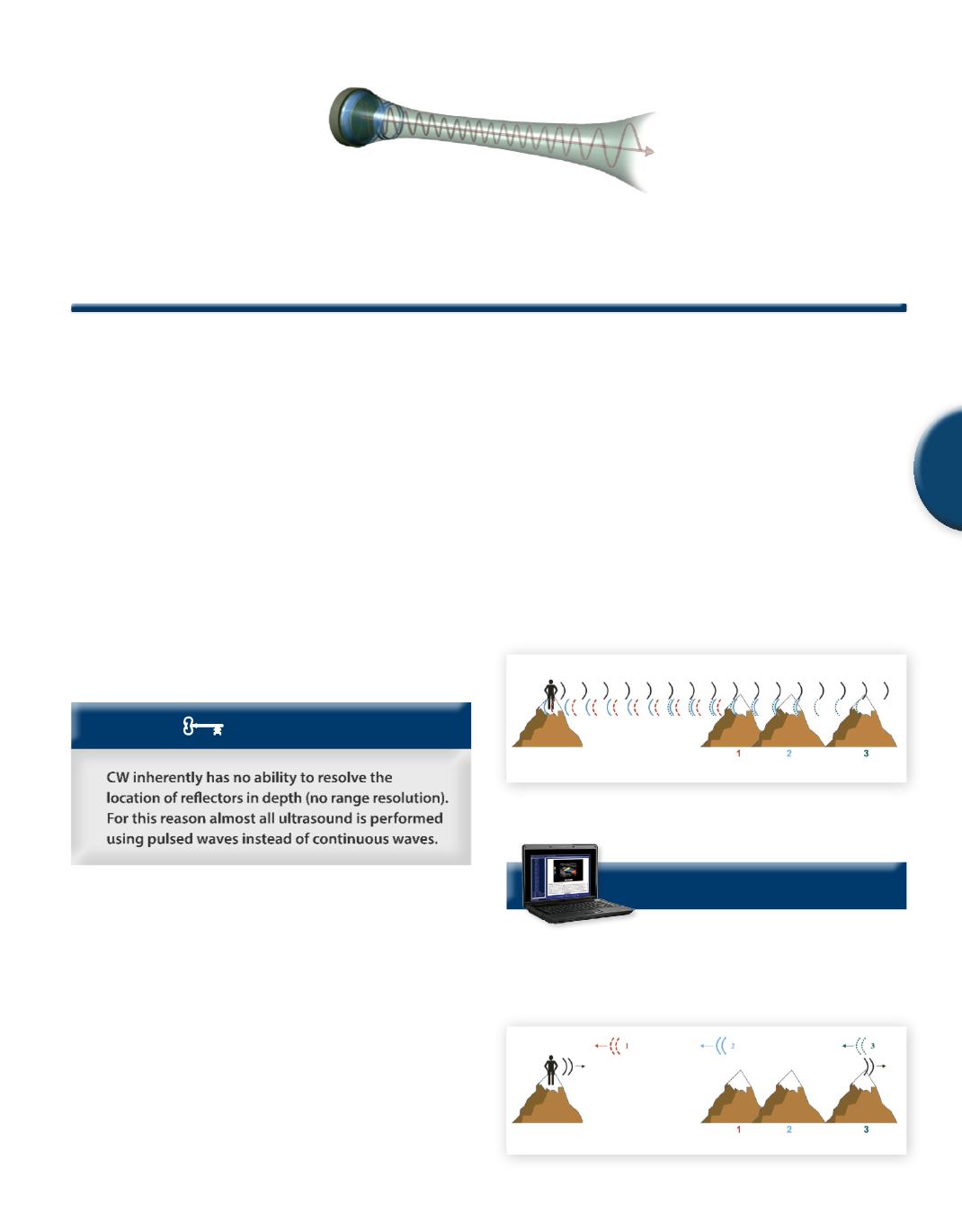
Chapter 4: Pulsed Wave Operation
75
4
Introduction
In our discussion of waves, there was no consideration regarding
turning the wave “on” and “off.” This omission was intentional in
order to keep the wave concepts separate from timing logistics. As
we will learn in this chapter, there is a major benefit associated with
not transmitting the wave continuously, but rather pulsing it on and
off repetitiously. Not surprisingly, when the wave is pulsed on and
off for operation, we refer to the technique as pulsed wave (PW)
operation. In contrast, if we leave the transmitter on continuously,
we refer to this as continuous wave. Most ultrasound techniques
are pulsed. Still, there are times when continuous wave operation
is used. Of course, there must be a drawback to PW as well as an
advantage, otherwise continuous wave would cease to be used. The
timing details of how long the wave transmitter will be allowed to
transmit and how long the wave transmitter will be turned off and
the related consequences will serve as the basis for this chapter.
KEY CONCEPT
1. Motivation for Using Pulsed Wave (PW)
In continuous wave operation, both the transmit and the receive
are simultaneous and continuous. To simultaneously transmit and
receive, there must be two transducers, one to transmit and one to
receive. To avoid having to hold two separate transducers, a single
transducer is “divided” into two halves; one half to continuously
transmit and the other half to continuously receive. As a result of the
continuous receive, echoes are received from all depths simultane-
ously, rendering it impossible to tell from where the echoes origi-
nated. This lack of range specificity, referred to as range ambiguity,
is the greatest limitation of continuous wave operation.
1.1 Range Ambiguity and Continuous Wave (CW)
To demonstrate the problem of range ambiguity, consider
Figure 1
.
In this example a continuous sound source transmits a signal toward
some mountains in the distance. In time, the sound waves reach
the first mountain and start to produce echoes. Meanwhile, since
the sound source continues to produce wavefronts, new wavefronts
continue to arrive producing more echoes. In time, the second
mountain is also reached.The reflections frommountain 2 are also
continuous. As time passes, the continuous stream of echoes from
mountain 2 intermixes with the continuous stream of echoes from
mountain 1. This process continues such that the reflection from
mountain 3 also intermixes with the echoes from mountain 1 and
mountain 2. As a result, there is a reflection, but there is no way
of distinguishing the origin of the intermixed reflections. In other
words, there is no range specificity.
Fig. 1
Echoes return from all mountains intermixed using a
continuous wave (CW)
VIEW ONLINE ANIMATION AND IMAGE LIBRARY
1.2 Range Specificity and Very Short Pulse
Imagine if instead of continuously transmitting and receiving, the
transmitter were repeatedly pulsed on and then off as in
Figure 2
.
Fig. 2
Echoes are separated in time using a pulsed wave (PW)
PulsedWave Operation
Chapter 4


